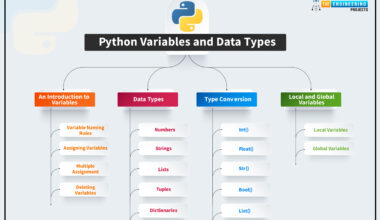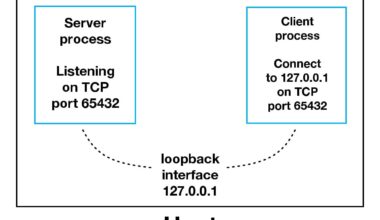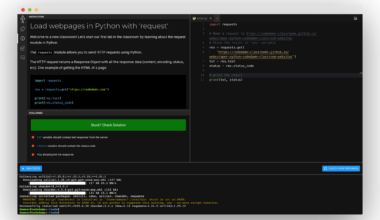Introduction: Understanding Network Programming in Python
As technology continues to evolve, the ability to connect computers and devices has become increasingly important. Network programming in Python is a powerful tool that allows developers to create applications that can communicate with other computers and devices on a network.
Python is a popular programming language that is widely used for network programming because of its simplicity, readability, and ease of use. With Python, developers can quickly create applications that allow computers to exchange data over a network.
Network programming in Python involves the use of sockets, which are endpoints that allow for the exchange of data between two devices on a network. Sockets are used to establish connections between devices and enable the transfer of data.
Python also provides libraries that make it easy for developers to work with networking protocols such as TCP, UDP, and IP. These protocols are used to govern the way data is transmitted across a network and ensure that it is delivered reliably and efficiently.
One of the most popular libraries for network programming in Python is the Socket library, which provides a simple interface for creating and managing sockets. The Requests library is another popular library that allows developers to send HTTP/1.1 requests extremely easily.
Network security is also an important consideration in network programming, and Python provides a range of tools for implementing security measures such as authentication, encryption, and decryption.
Overall, network programming in Python is a valuable skill for developers who want to create applications that can communicate with other devices on a network. By understanding the basics of network programming in Python, developers can build powerful applications that enable computers and devices to work together seamlessly.
Socket Programming in Python: Establishing Connections
Python’s socket module provides a simple and easy-to-use interface for establishing connections between devices on a network. A socket is a virtual endpoint of a two-way communication link that takes place between two programs running on different devices.
To establish a connection between two devices using sockets in Python, you need to create a socket object and bind it to a specific address and port. Here’s an example:
import socket
# create a socket object
s = socket.socket()
# get local machine name
host = socket.gethostname()
# bind the socket to a specific address and port
s.bind((host, 12345))
# listen for incoming connections
s.listen(5)
# accept incoming connections
while True:
conn, addr = s.accept()
print('Connected by', addr)
conn.close()
In the above example, we first create a socket object using the socket() function. We then get the local machine name using the gethostname() function and bind the socket to a specific address and port using the bind() function.
Next, we listen for incoming connections using the listen() function. The parameter passed to the listen() function specifies the maximum number of queued connections allowed.
Finally, we accept incoming connections using the accept() function. The accept() function returns a new socket object representing the connection, as well as the address of the client. In this example, we simply print the address of the client and close the connection.
Python’s socket module also provides a number of other functions for establishing connections, sending and receiving data, and managing sockets. These functions include connect(), send(), recv(), and close().
In addition to the socket module, Python also provides a number of third-party libraries for network programming, such as Requests, which simplifies the process of sending HTTP requests, and Twisted, which provides a full-featured event-driven networking engine.
In conclusion, socket programming in Python is a powerful tool that allows developers to create applications that can communicate with other devices on a network. By understanding the basics of socket programming and the various libraries available, developers can build robust network applications that enable devices to work together seamlessly.
Networking Protocols: TCP, UDP and IP
Networking protocols are a set of rules and standards that govern the way data is transmitted between devices on a network. TCP, UDP, and IP are some of the most commonly used networking protocols.
TCP (Transmission Control Protocol) is a reliable, connection-oriented protocol that guarantees the delivery of data packets in the order they were sent. TCP is widely used for applications that require reliable data transmission, such as email, file transfers, and web browsing.
UDP (User Datagram Protocol) is a connectionless, unreliable protocol that does not guarantee the delivery of data packets. UDP is commonly used for applications that require fast, low-latency communication, such as online gaming, streaming video, and Voice over IP (VoIP).
IP (Internet Protocol) is a protocol that governs the way data is transmitted across the internet. IP is responsible for routing data packets between devices on the internet, and it provides a mechanism for addressing devices on the network.
To use TCP, UDP, or IP protocols in Python, you can use the socket library, which provides support for these protocols. Here’s an example of how to use the socket library to create a TCP connection:
import socket
# create a TCP socket object
s = socket.socket(socket.AF_INET, socket.SOCK_STREAM)
# connect to a remote server
s.connect(('www.example.com', 80))
# send a request to the server
s.send(b'GET / HTTP/1.1\r\nHost: www.example.com\r\n\r\n')
# receive data from the server
data = s.recv(1024)
# close the connection
s.close()
In the above example, we first create a TCP socket object using the socket() function and specifying AF_INET (IPv4) and SOCK_STREAM (TCP) as arguments. We then connect to a remote server using the connect() function and specifying the server address and port.
Next, we send a request to the server using the send() function and receive data from the server using the recv() function. Finally, we close the connection using the close() function.
Python’s socket library also provides support for UDP and IP protocols. To use UDP, simply specify SOCK_DGRAM (UDP) instead of SOCK_STREAM (TCP) when creating the socket object. To use IP, you can use the socket.getaddrinfo() function to resolve hostnames into IP addresses.
In conclusion, TCP, UDP, and IP are important networking protocols that govern the way data is transmitted on a network. Python’s socket library provides support for these protocols, allowing developers to create powerful network applications that can communicate with other devices on the network.
Python Libraries for Network Programming: Socket, Requests
Python provides a wide range of libraries that allow developers to create powerful network applications. The Socket library is a built-in library that provides low-level access to networking protocols such as TCP, UDP, and IP. On the other hand, the Requests library is a third-party library that simplifies the process of sending HTTP requests.
The Socket library is the foundation of network programming in Python. Developers can use the Socket library to create and manage sockets, establish connections, and send and receive data. The Socket library provides a simple and easy-to-use interface that allows developers to work with networking protocols at a low level.
One of the key advantages of using the Socket library is its flexibility. Developers can use the library to create a wide range of network applications, from simple chat programs to complex distributed systems. The Socket library also provides support for both IPv4 and IPv6, making it a versatile tool for network programming.
Here’s an example of how to use the Socket library to create a simple chat program:
import socket
# create a socket object
s = socket.socket()
# get local machine name
host = socket.gethostname()
# bind the socket to a specific address and port
s.bind((host, 12345))
# listen for incoming connections
s.listen(5)
# accept incoming connections and send messages
while True:
conn, addr = s.accept()
print('Connected by', addr)
conn.sendall(b'Welcome to the chat program! Enter your name:')
name = conn.recv(1024)
print('User', name.decode('utf-8'), 'has joined the chat.')
while True:
message = conn.recv(1024)
if not message:
break
print(name.decode('utf-8'), ':', message.decode('utf-8'))
conn.sendall(b'Received')
conn.close()
In the above example, we first create a socket object using the socket() function. We then bind the socket to a specific address and port using the bind() function and listen for incoming connections using the listen() function.
When a client connects, we send a welcome message and ask the client to enter their name. We then receive the client’s name and print a message indicating that the user has joined the chat.
We then enter a loop where we receive messages from the client and print them to the console. If the client sends an empty message, we break out of the loop and close the connection.
The Requests library, on the other hand, provides a high-level interface for sending HTTP requests. The library simplifies the process of sending requests and handling
Network Security: Authentication, Encryption and Decryption
Network security is a critical aspect of network programming, and Python provides several tools for implementing security measures such as authentication, encryption, and decryption.
Authentication is the process of verifying the identity of a user or device. In network programming, authentication is often used to restrict access to sensitive data or resources. Python provides several libraries for implementing authentication, such as the Flask-HTTPAuth library, which provides support for basic and digest authentication.
Encryption is the process of encoding data in such a way that only authorized parties can access it. Encryption is an essential tool for protecting sensitive data transmitted over a network. Python provides several libraries for implementing encryption, such as the cryptography library, which provides support for a wide range of encryption algorithms.
Here’s an example of how to use the cryptography library to encrypt and decrypt data in Python:
from cryptography.fernet import Fernet
# generate a key
key = Fernet.generate_key()
# create a Fernet object
f = Fernet(key)
# encrypt data
message = b'My secret message'
encrypted_message = f.encrypt(message)
# decrypt data
decrypted_message = f.decrypt(encrypted_message)
print('Original message:', message)
print('Encrypted message:', encrypted_message)
print('Decrypted message:', decrypted_message)
In the above example, we first generate a key using the Fernet class and create a Fernet object using the key. We then encrypt a message using the encrypt() method and decrypt the encrypted message using the decrypt() method.
Decryption is the process of converting encoded or encrypted data back into its original form. Decryption is necessary to make sense of encrypted data transmitted over a network. Python provides several libraries for implementing decryption, such as the PyCrypto library, which provides support for a wide range of encryption and decryption algorithms.
In conclusion, network security is an essential aspect of network programming, and Python provides several tools for implementing security measures such as authentication, encryption, and decryption. By understanding these tools and how to use them, developers can build powerful network applications that are secure and reliable.
Final Thought: The Future of Network Programming in Python
Python’s popularity and versatility have made it a popular choice for network programming. As technology continues to evolve, the need for network programming will only increase, and Python is well-positioned to meet that demand.
One of the key advantages of Python is its simplicity and ease of use. This makes it an ideal language for network programming, as it allows developers to focus on the logic of their applications rather than the intricacies of networking protocols.
Python’s large and active community also provides a wealth of resources for network programming. From online forums and tutorials to libraries and frameworks, developers have access to a wide range of tools and support for their network programming projects.
In addition to traditional network programming, Python is also well-suited for emerging technologies such as the Internet of Things (IoT) and machine learning. The simplicity and versatility of Python make it an ideal language for developing IoT devices and applications, while its powerful libraries and frameworks make it a popular choice for machine learning projects.
Python’s future in network programming looks bright, and developers who invest in learning the language and its associated tools will be well-positioned for success in this rapidly growing field. Whether it’s building distributed systems, developing IoT devices, or creating machine learning applications, Python is a powerful tool for network programming that will continue to play a significant role in the future of technology.






















